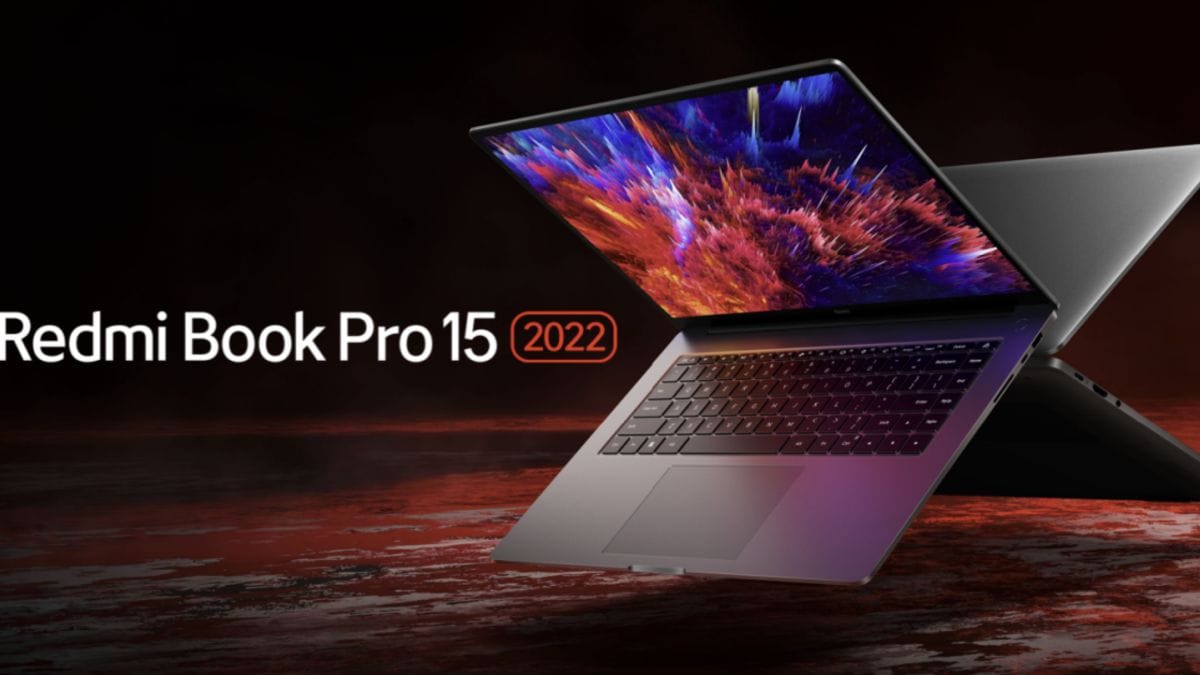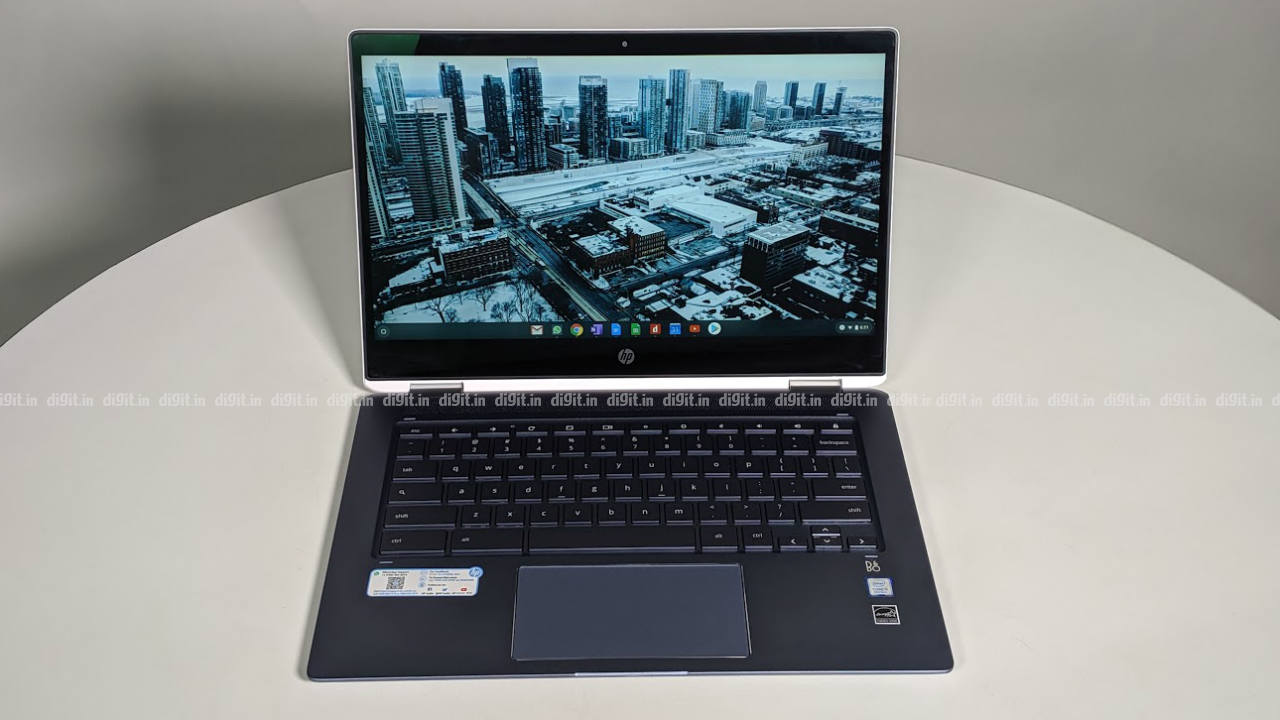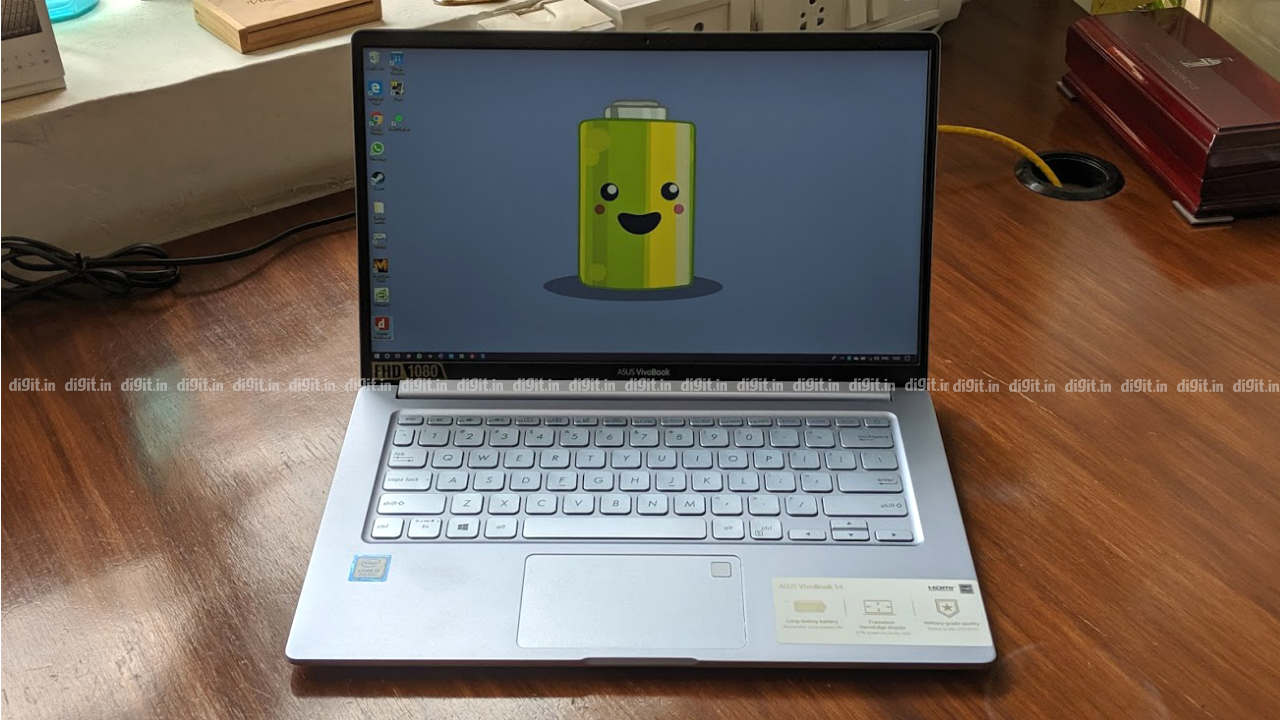
Asus has launched the VivoBook 14 X403 just a couple of months after the VivoBook 14 X412. At first glance, the two could end up as similar products in terms of how they look and what they offer on the inside but a closer look will reveal that there’s quite a bit of difference. While the X412 is a typical Asus mid-range mainstream laptop that is offered in multiple variants, the X403 is a mid-range offering that comes in only one variant. But that’s only because it helps Asus push the X403’s USP: long battery life.
Asus has equipped the VivoBook 14 X403 with a whopping 72Wh internal battery. Other laptops in the same range of fifty thousand rupees, by contrast, pack a battery that delivers 35–50Wh depending on the make and model. The VivoBook 14 X412 that we reviewed a while ago packs a 37Wh unit, which in our review lasted 2 hours, 25 minutes on our standard battery benchmark test. What about the new VivoBook 14 X403 then? Let’s find out.
Performance
In the one and only variant the Asus VivoBook 14 X403 is available in, it features an Intel Core i5-8265U (Whiskey Lake) CPU with 8GB of RAM and integrated graphics. Storage is taken care of by a 512GB PCIe NVMe solid-state drive. While the spec sheet looks healthy for the Rs 54,990 Asus charges, there’s one area of concern with the new Asus laptop: the RAM simply cannot be upgraded as it’s a soldered chip with no empty slots around it on the motherboard. So the X403 is for customers who are quite confident that their memory requirement in the present or future won’t exceed 8GB. Fortunately, the M.2 solid-state drive chip can be upgraded to a maximum of 1TB even though Asus warns the battery is optimised for the bundled 512GB chip.
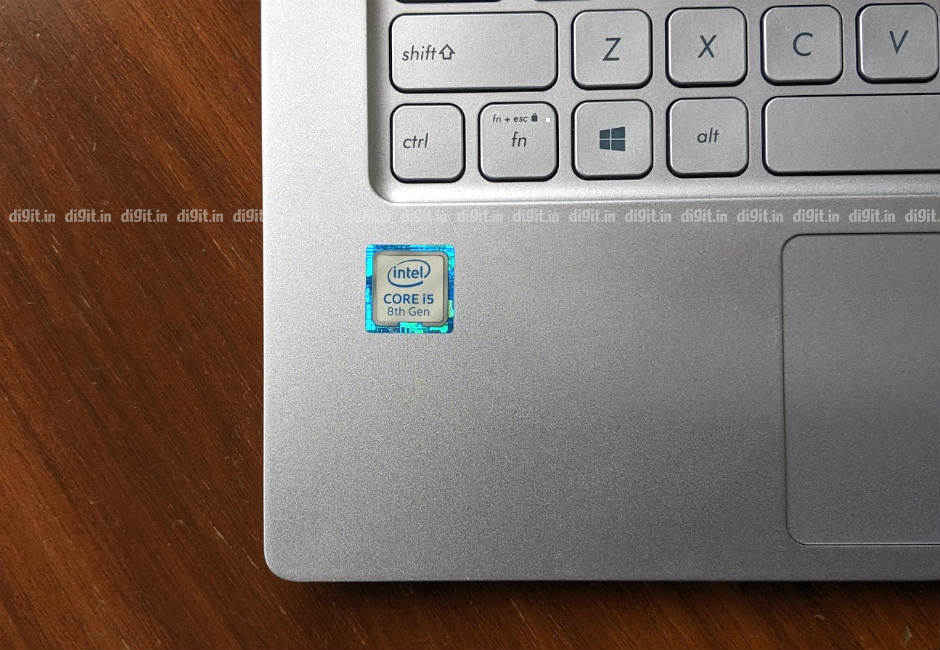
The review unit fared well on our CPU benchmark tests but lost points on our GPU benchmark tests. On PCMark 8’s Accelerated Creative test, the X403 bagged 3724 points, which is a little lower than the 3758 points the X412 bagged. Because it doesn’t feature discrete graphics, the X403 lost to the MX250-powered X412. On 3DMark’s Fire Strike and Cloud Gate, the X403 scored 1175 and 9401 points respectively. The X412, by contrast, scored 2079 and 10065 points on the same two tests respectively. The disk speeds on the X403 were similar to those obtained on the X412.
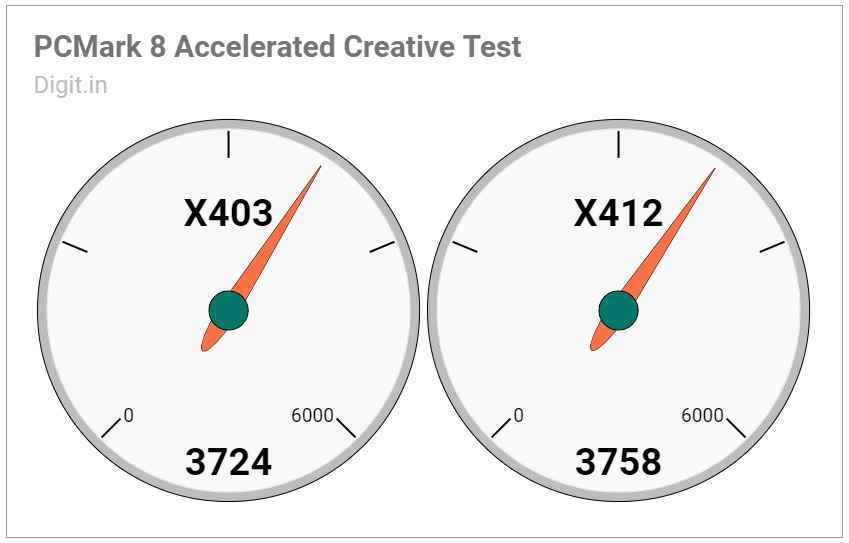
They’re both neck and neck here
I was able to open numerous everyday applications such as Chrome, File Explorer, Microsoft Store, Word, Excel, and WhatsApp for PC across multiple virtual desktops on the review unit. Opening a dozen instances of Chrome with multiple tabs open in each window seemed to make no difference to the sprightliness of the laptop. I was glad to note that switching between windows and virtual desktops quickly and frequently in the course of a busy workday led to no signs of lag or stuttering. Unfortunately, gaming was no go on the X403 because of the lack of a dedicated graphics card. Both Doom and Metro: Last Light ran at an average frame rate of 16 frames per second in Medium graphics settings (one level above the lowest).
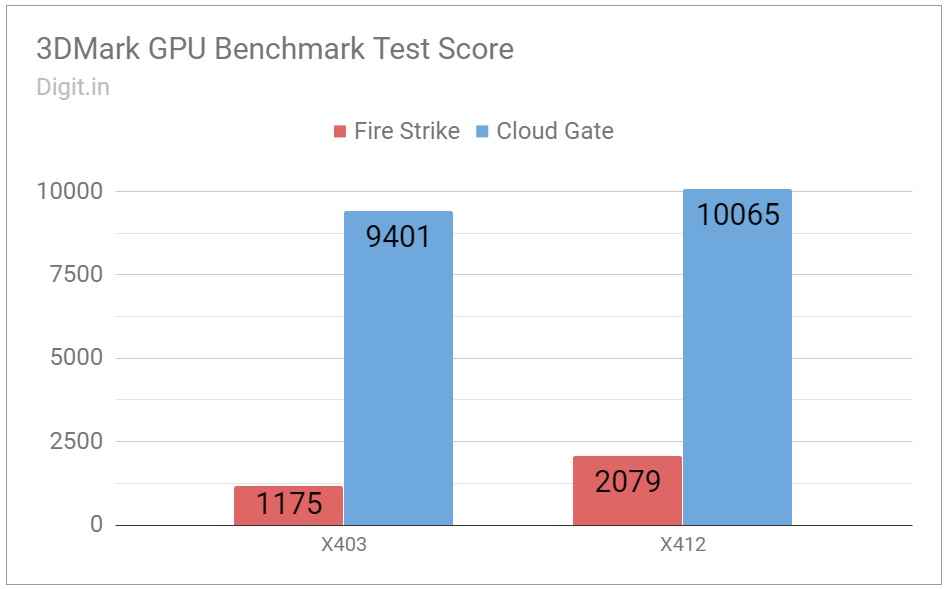
X403 loses out on GPU tests to the MX250-powered X412
Battery
The VivoBook 14 X403 packs a rather large 72Wh quad-cell lithium-ion polymer non-removable internal battery, which Asus claims is good for up to 24 hours of continuous local video playback. On our standard battery benchmark test, the review unit scored 6 hours, 16 minutes. In comparison to the X412’s score on the same test, it’s an impressive three-fold jump. The only other laptop outlasting the X403 in the mainstream category of our books is the 15-inch Microsoft Surface Book 2 with its score of 6 hours, 55 minutes.
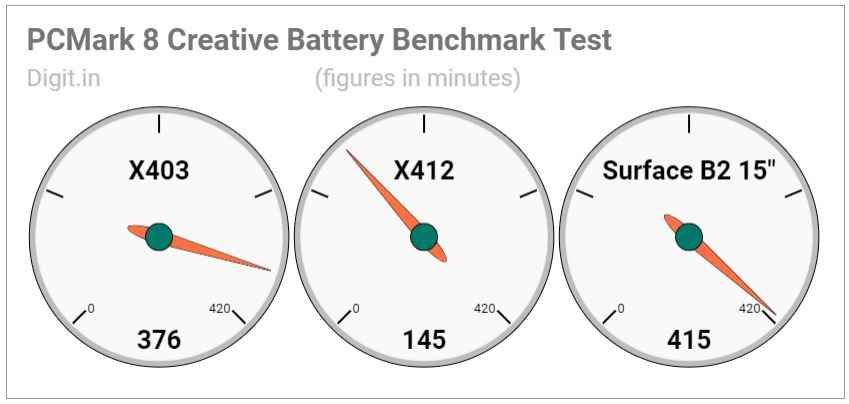
A stunning 6 hours, 16 minutes on our benchmark test
I must say that I was pleasantly surprised by how long the review unit could operate away from the wall socket. With Wi-Fi + Bluetooth enabled and the screen set to about 70–80 percent brightness on the X403, I composed several documents, browsed on numerous Chrome windows, played music in the background, watched a ten-minute YouTube on Full HD, downloaded files, and installed some lightweight applications. After four hours of doing all that, I noticed that the battery had dropped from 82 percent to 38 percent. On another such run, I noticed that the battery had fallen from 82 percent to 61 percent in about 2 hours, 45 minutes. As you can probably tell, the Asus VivoBook 14 X403 is definitely designed for users constantly on the move.
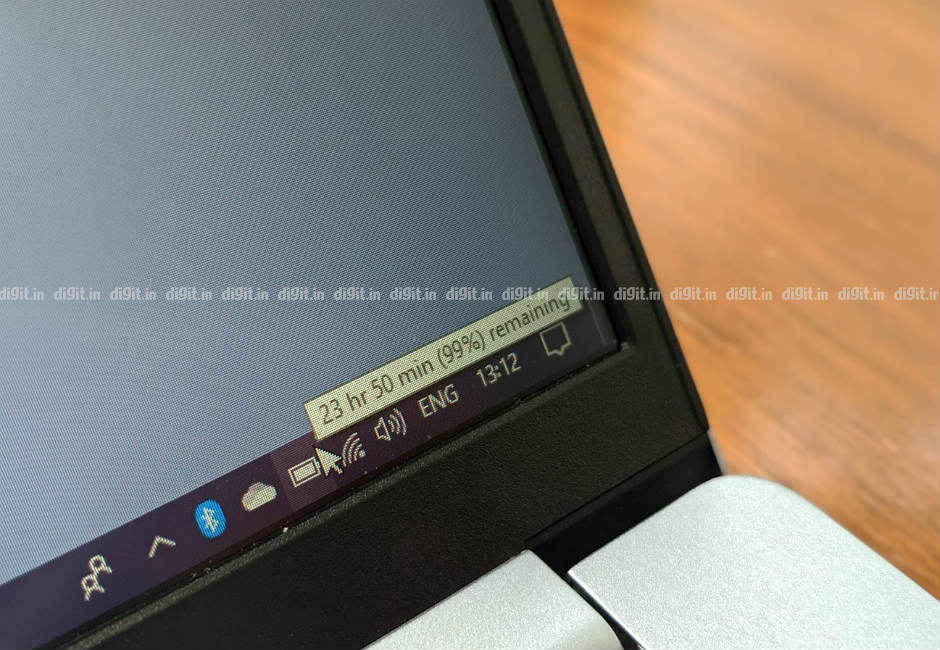
Windows tends to be over-optimistic with that time-left figure
Build and Design
The VivoBook 14 X403 looks neat and presentable in an office environment but not especially attractive or different. In a sea of similarly priced mainstream laptops it’s bound to get lost. In fact, I initially had some troubling differentiating it from the X412 but that’s probably also because both models are offered in the same unexciting silver. That said, the X403’s construction is a lot better than the X412’s in that it employs an all-aluminium chassis that’s certified to MIL-STD 810G standards. To sum it up, the VivoBook 14 X403 is solidly built for work and play. You can expect yourself to pick it up and carry it around with a sense of pride and confidence.
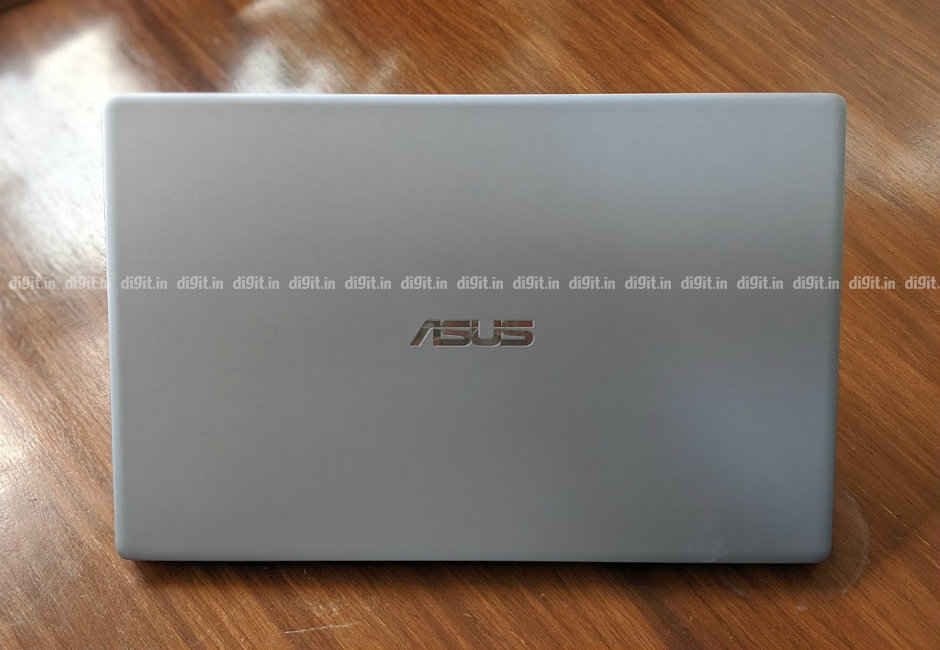
Clean, slate-like metallic top cover
The X403’s silvery metallic top cover is smooth to the touch and grippy to hold. Measuring 16.5 millimetres in thickness and weighing 1.35 kilogrammes, the X403 is comfortably compact for a 14-inch model. Opening (or closing) the lid with one hand reveals no signs of flex. On the inside, we see a matte display surrounded by fairly thin (4.1mm) matte black bezels. The colour of the keyboard island (including the touchpad and keys on the keyboard) matches that of the rest of the laptop, which, in my opinion, oversimplifies the laptop’s overall appearance. This VivoBook could have definitely done with a bit more variety in its colour scheme.
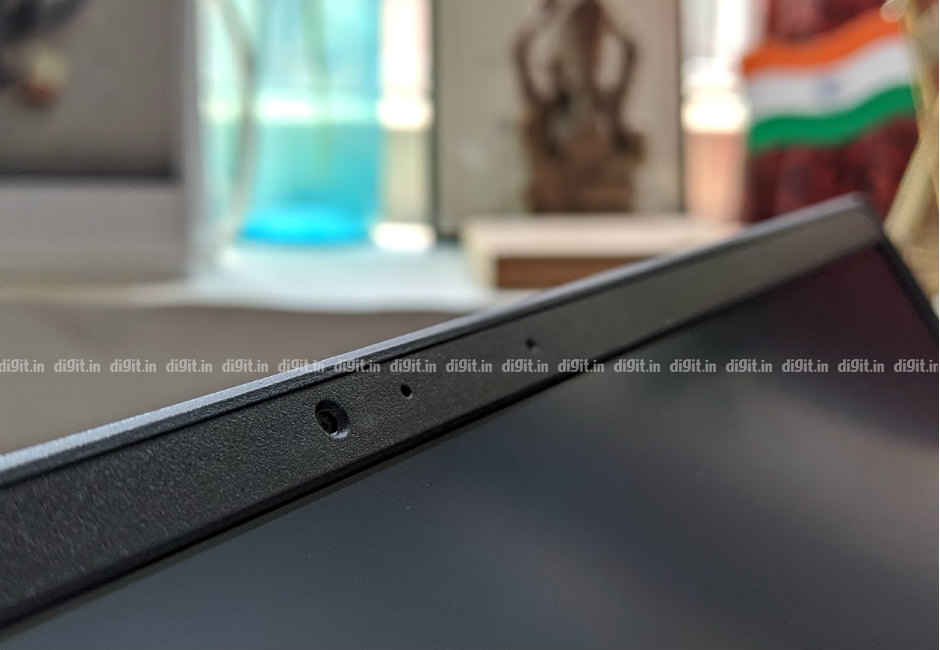
Slim bezels around the display
Display, Audio, and IO
The display on the Asus VivoBook 14 X403 is predictably a 14-inch LED-backlit LCD panel with a Full HD resolution. Asus notes it’s capable of reproducing 45 percent of colours in the NTSC colour space. In my experience, the unit is both bright and colourful for everyday browsing and video playback. The screen is bright enough and works well in both a sunlit balcony and a conference room that has bright lights directly above the laptop. The anti-glare finish makes a huge positive difference to the overall readability of text on a browser window. In other words, this screen is perfect for users intending to do a lot of reading and browsing.
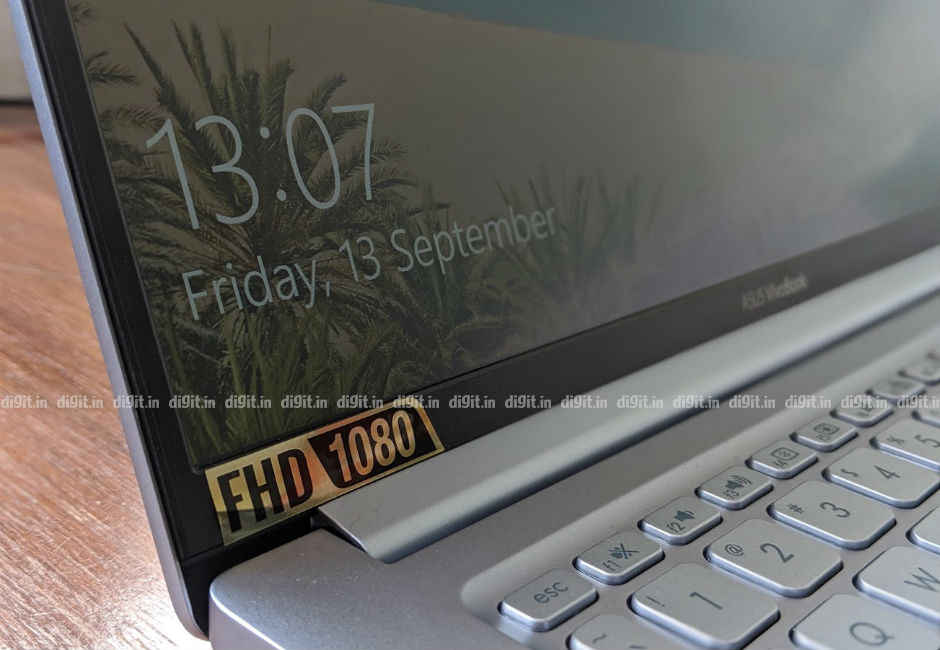
14-inch LCD screen is clear and colourful
The two bottom-firing speakers on the VivoBook 14 X403 work just fine for casual music playback and quick video calls in a quiet office cubicle but ask to be replaced by a proper set of external speakers in noisier spaces. Highs and mids make it through without sounding too muffled or distorted at max volume, leaving the lows to be better expressed. Like most Asus products, a small notification asks you if you have switched to a different audio output source every time you plug a pair of headphones in. This can get a bit annoying for frequent headphone use.
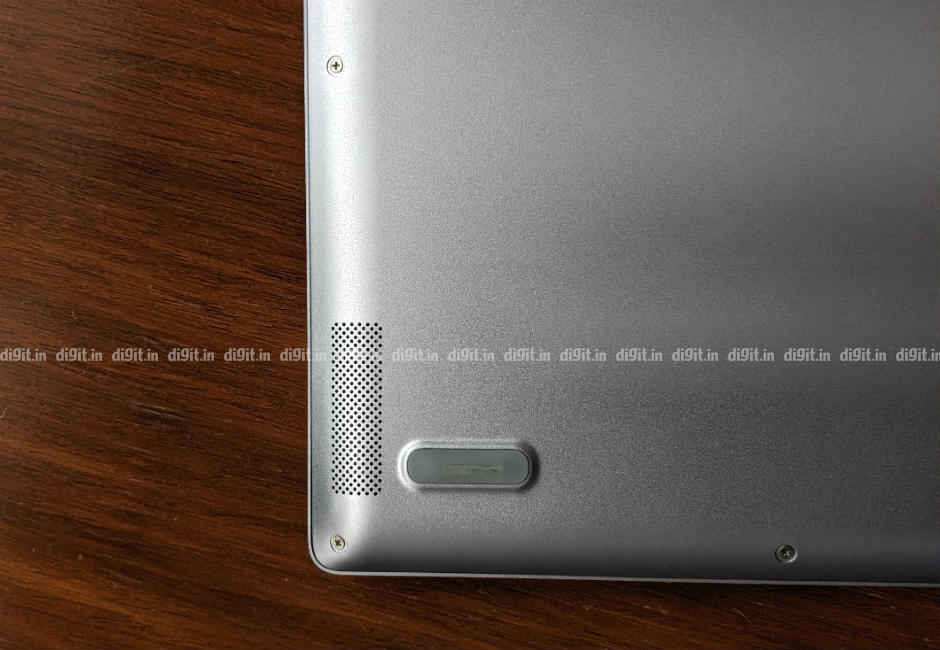
Speakers are bottom-firing as usual
I’m happy to say that there’s no dearth of IO ports on the VivoBook 14 X403. On the left side of the laptop, we see a round-pin power port, a full-size HDMI 1.4 port, a USB-A 3.1 port, and a USB-C 3.1 port along with a couple of status indicators. On the right side, we see a USB-A 2.0 port, an SD Card slot, and a 3.5mm audio jack for headsets. A tiny quick-to-read fingerprint reader finds itself on the top-right corner of the laptop’s touchpad.
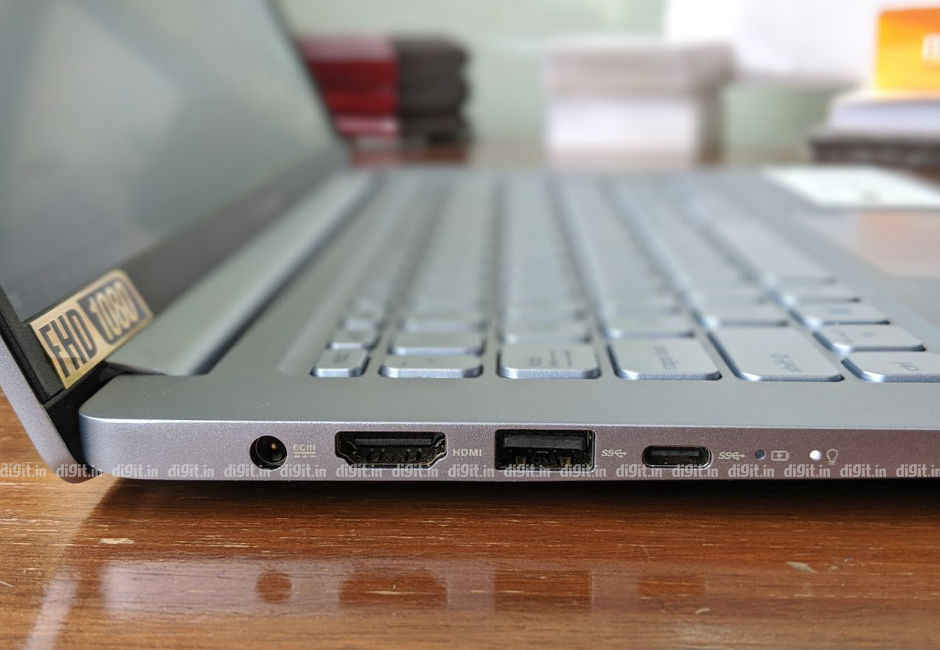
Ports on the left
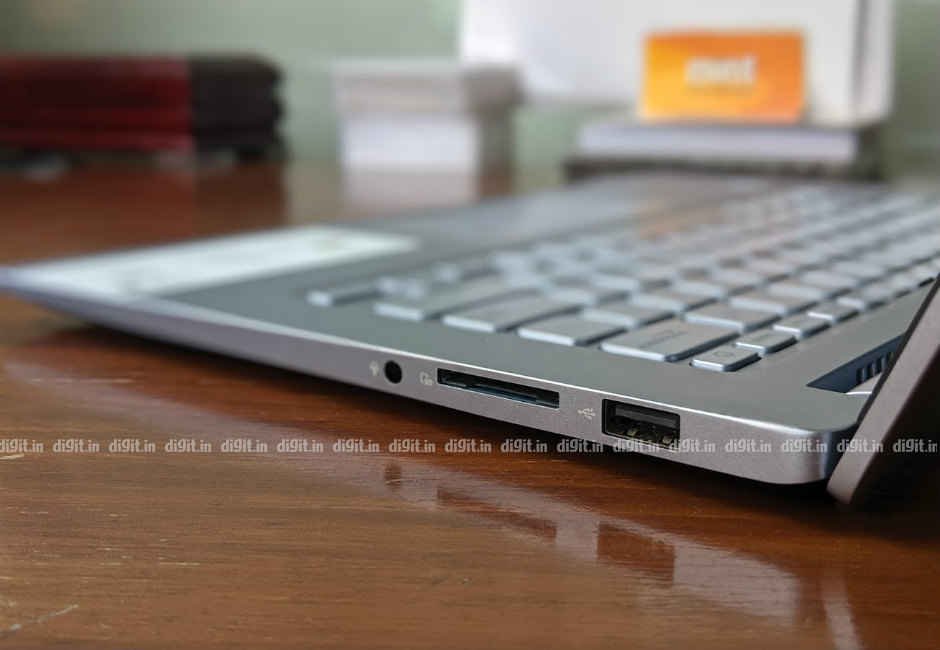
Ports on the right
Keyboard and Touchpad
The keyboard on the Asus VivoBook 14 X403 is comfortable for typing long documents and emails. Like the ones on the X412, the keys on the X403 have just the right amount of travel and resistance. It appears Asus has finally nailed the feel of the keys on its latest VivoBook series. That said, the keyboard layout itself could do with some improvement.
For example, the Home, End, Page Up, and Page Down keys are combined with function keys on the top row. Users in need of them and the function keys will be forced to use the Fn key. What’s more, the power button could have been placed away from the Delete key to avoid accidental sleeps or hibernates.
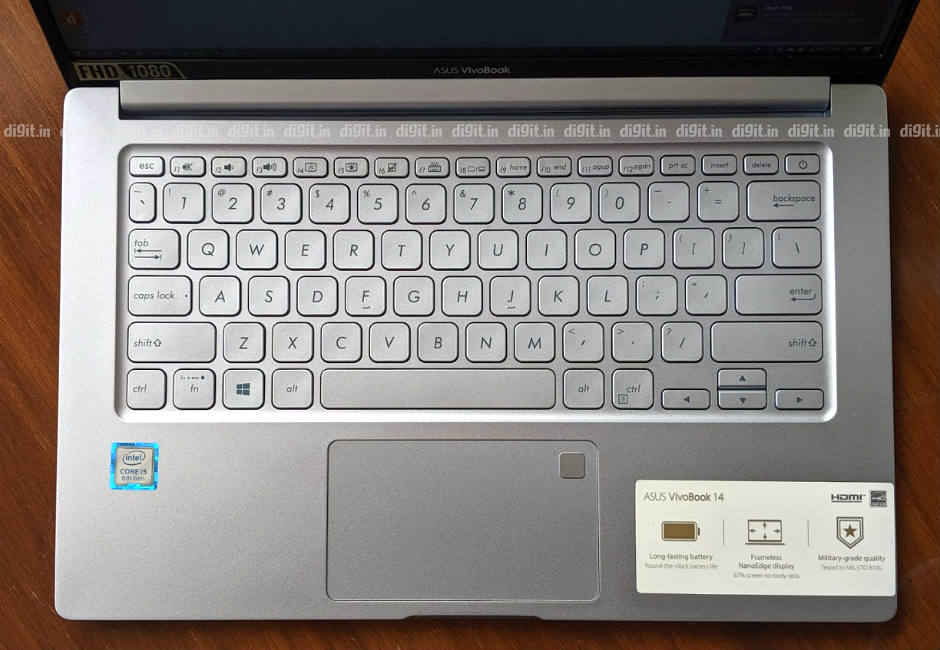
Comfortable keyboard despite some minor layout issues
In addition, Asus could have chosen a slightly darker colour for the keys on the X403 while retaining the silver base because the white backlight under the silver keycaps often results is reduced contrast while viewing the letters on the keys. In other words, it’s like viewing white text against a white background—illegible and therefore useless.
The touchpad on the X403 is a precision unit, which means multi-finger taps and swipes work right out of the box without the need for any third-party utility or driver on Windows 10. The surface is smooth yet grippy, making it easy for taps, clicks, and swipes. The left- and right-mouse buttons, which are under the touchpad, are a tad hard to press but they should be no bother in the long run. In summary, the touchpad on the X403 is just fine for everyday use.
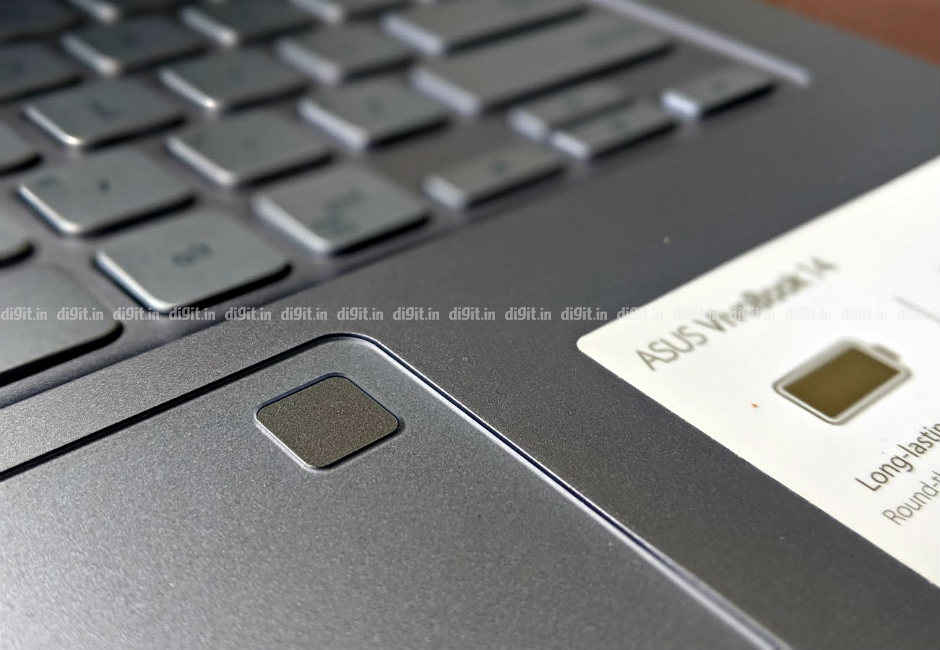
Smooth touchpad accompanied by a quick fingerprint reader
Bottom Line
The Asus VivoBook 14 X403 is a finely engineered product with many special qualities. The comfortably compact fourteen-incher delivers a remarkably long battery life, which makes it ideal for users whose work forces them to be away from the wall socket for many hours at a stretch. It also delivers top-notch performance for users hoping to edit long documents, work on spreadsheets, browse heavily, and watch videos online. That said, it’s no good for anyone wanting to play video games on it.
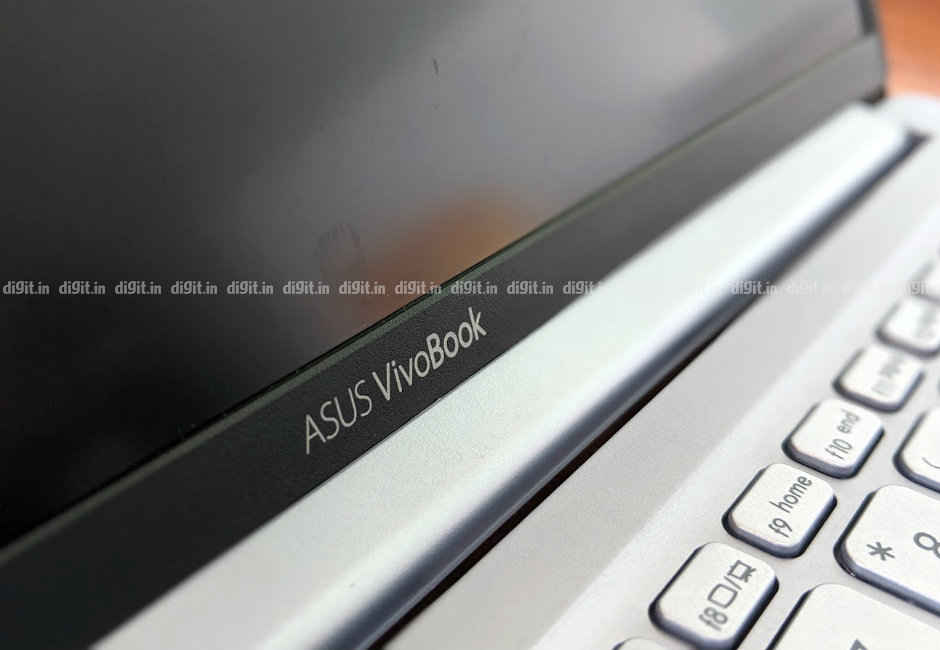
You can’t go wrong with this Asus laptop
While the VivoBook 14 X403 comes with many plusses, its single and perhaps biggest minus creates a painful deal-breaker for users wanting a memory upgrade in the future. As mentioned before, the X403 is for customers who are convinced that their memory requirement in the present or future won’t exceed the soldered 8GB. Barring that single crucial limitation, the Asus VivoBook 14 X403 proves to be a fine mainstream laptop for Rs 54,990.
[ad_2]
Source link

